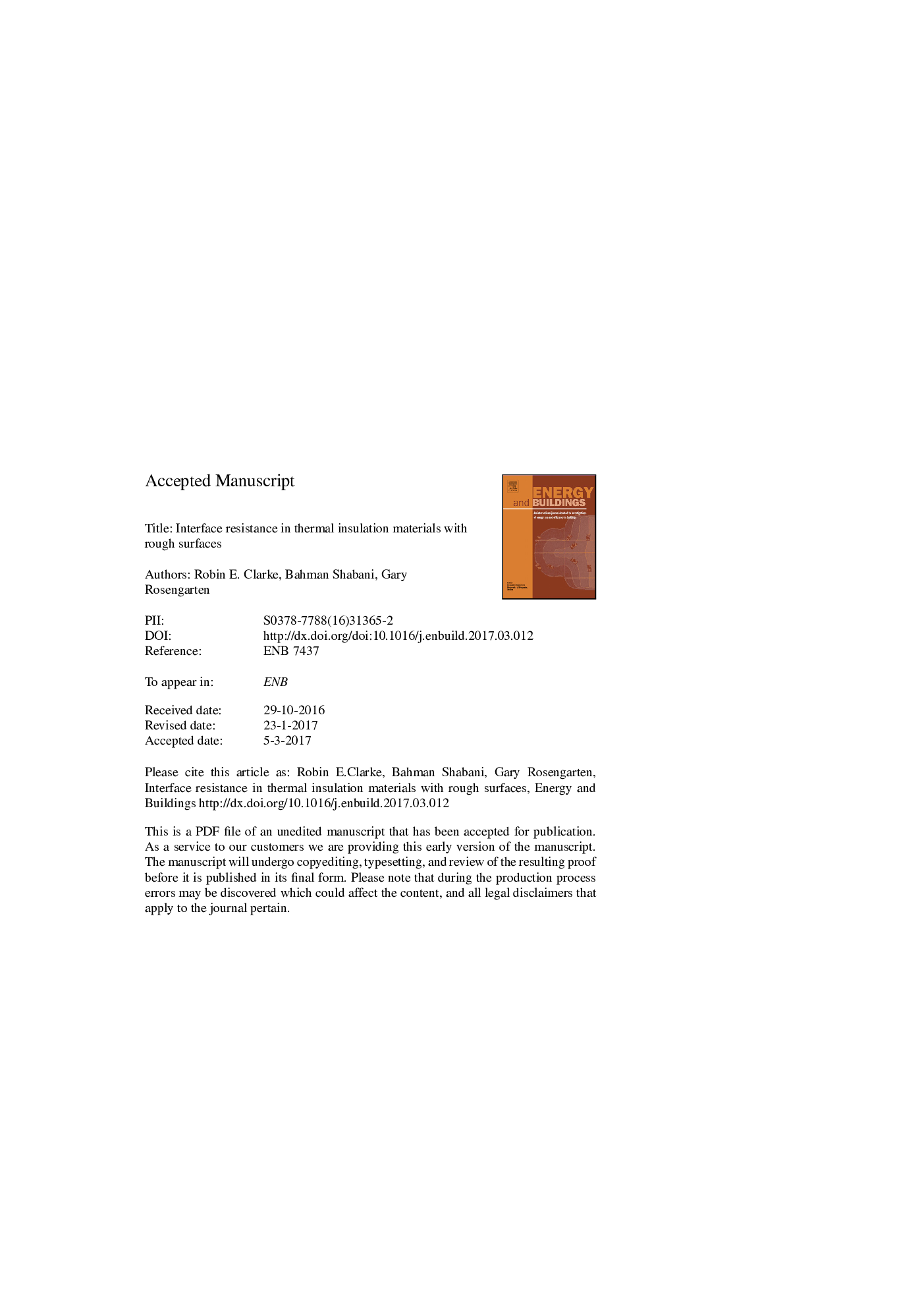| Article ID | Journal | Published Year | Pages | File Type |
|---|---|---|---|---|
| 4919197 | Energy and Buildings | 2017 | 38 Pages |
Abstract
We have previously shown how errors due to interface resistance arising in the measurement of highly-conducting insulation materials may be minimized by the use of flexible buffer sheets at the plate interface. We have found however that for materials with very rough surfaces, such as some building boards, thermal resistance and test thickness are both measured to be higher when harder buffers are used. This paper reports on an experimental study of nine materials and four buffer types to better quantify these effects. Thermal resistance was higher by up to 0.01 m2 K/W and thickness by up to 0.5 mm using the hardest buffer relative to the softest. An analytical model has been developed, allowing measured roughness to be expressed as flat high and low areas of varying height and area fraction so that thermal resistance and height variations may be predicted as a function of roughness. These predictions have agreed reasonably well with optical roughness measurements. The model further predicts that interface-resistance errors are proportional to surface roughness and are always present with harder buffers, typically reaching 010 m2 K/W for a mean roughness amplitude (Sa) of 200 μm. However with softer buffers these errors are absent below an onset level, typically at an Sa value of 60 μm.
Related Topics
Physical Sciences and Engineering
Energy
Renewable Energy, Sustainability and the Environment
Authors
Robin E. Clarke, Bahman Shabani, Gary Rosengarten,
